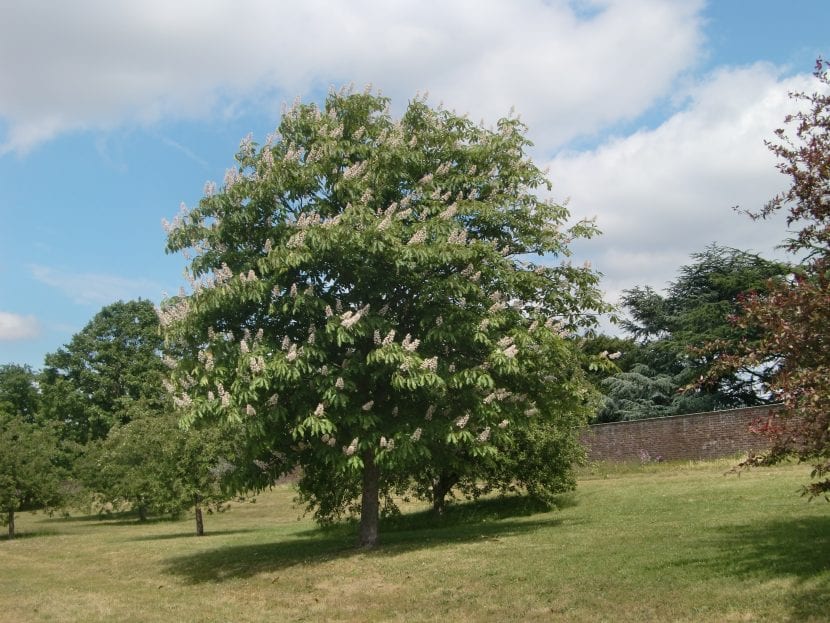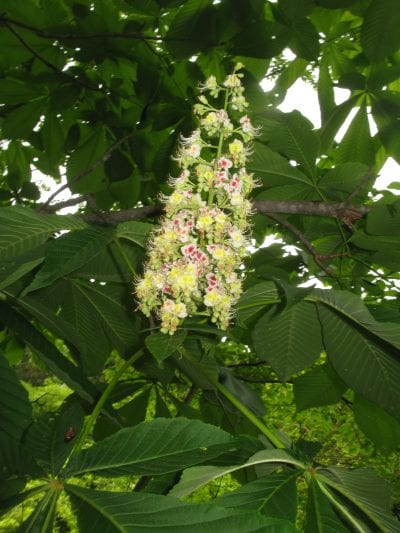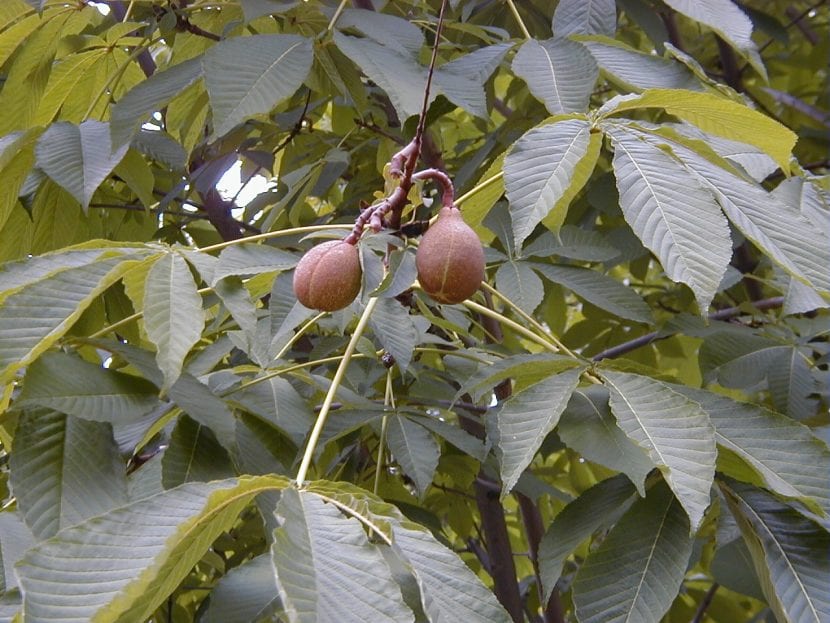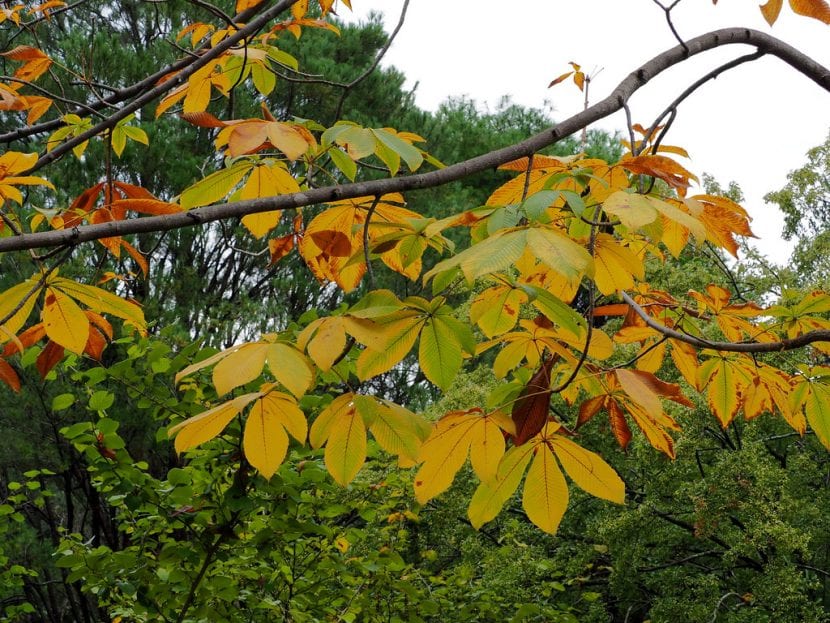
Who dreams of having a large deciduous tree, under whose branches he can protect himself from the sun while enjoying, for example, a good read, it will be difficult for him to find one as recommendable as the Aesculus. All the species of this genus are spectacular, but there are some that are better known than others, such as the Aesculus turbinata.
And that is a shame, because it is a wonderful plant, because it produces inflorescences with great ornamental value. So if you want to know it, don't stop reading 🙂.
Origin and characteristics

Our protagonist is a deciduous tree native to Japan, which has managed to naturalize in China. Its scientific name is Aesculus turbinata, and the common name False Japanese chestnut. The "false chestnut" comes from its fruit, which, although it may be reminiscent of the shape and color of the chestnuts of Castanea sativa, unlike these, they are not edible.
It reaches a height of up to 30 meters, with a 4-5m wide crown and a 40-50cm thick straight trunk.. Its leaves are palmate, with a slightly glaucous underside, and measure 15-35 by 5-15cm. The flowers are grouped in glabrous or pubescent inflorescences, and are pale yellow or white with red spots. The fruit is a dark brown capsule 2,5-5cm in diameter.
Blooms in spring and into early summer (from May to July in the northern hemisphere), and bears fruit in autumn.
What are their cares?

If you want to get a copy, we recommend providing the following care:
- Location: outside, in full sun. In the event that the climate is temperate-warm (such as the Mediterranean, in which there are weak and occasional frosts of up to -5ºC and where summers are very hot, over 30ºC) it is better to have it in semi-shade.
- Irrigation: 3-4 times a week in summer and every 5-6 days the rest of the year. Use rainwater or lime-free. If you cannot get it, pour the liquid of half a lemon in a liter of water, or a tablespoon of vinegar in 5l of water.
- Planting or transplanting time: in spring.
- Subscriber: it must be paid with organic fertilizers, liquid if it is in a pot or powder if it is planted in the ground, from spring to summer.
- Pruning: Pruning is not recommended, as it will lose some of its charm 🙂. The only thing that should be removed are dry, diseased or weak branches.
- Multiplication: by seeds in autumn.
- Rusticity: withstands up to -18ºC, but is harmed by high temperatures. It cannot live in tropical climates.

Aesculus turbinata in autumn.
Have you heard of this tree?